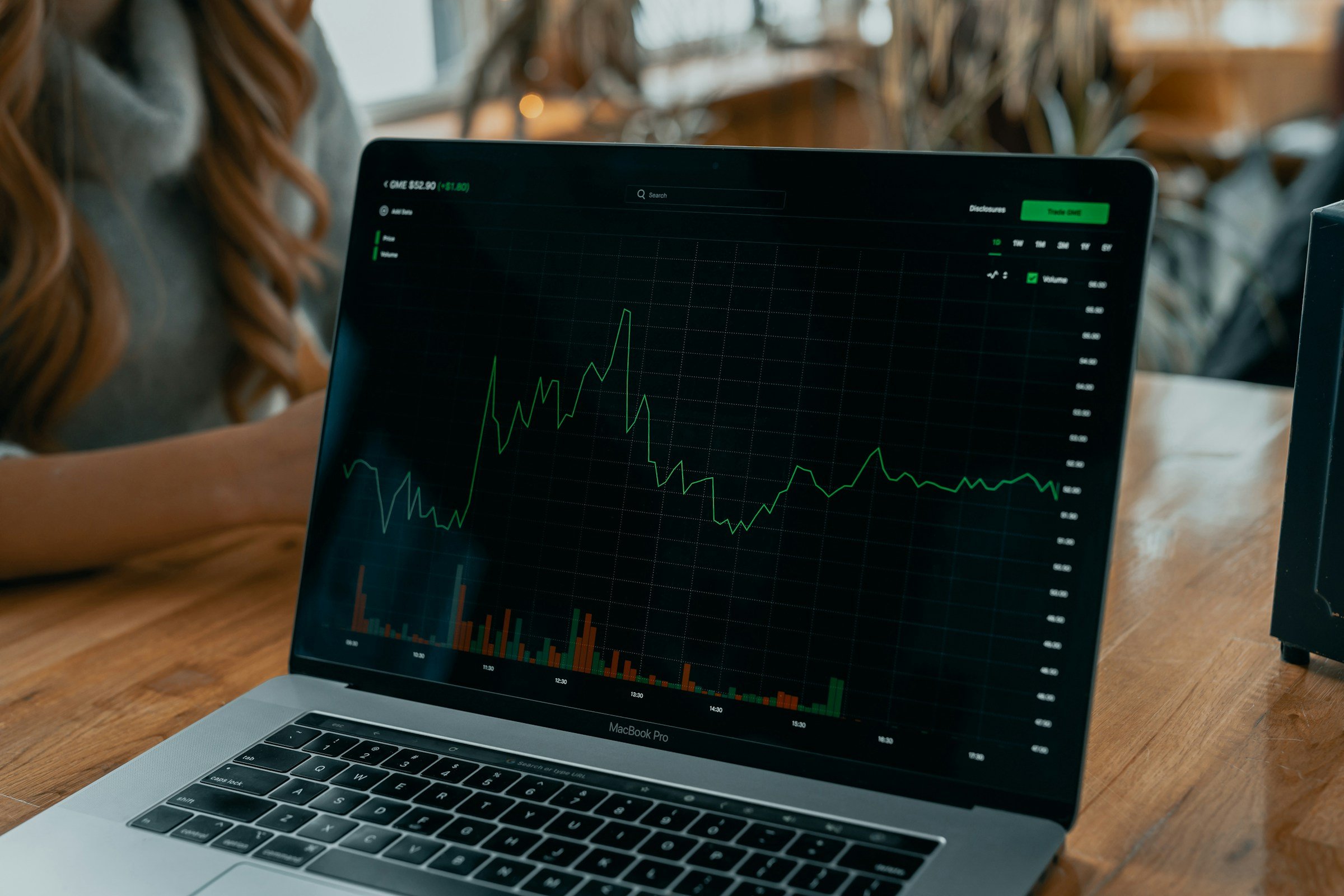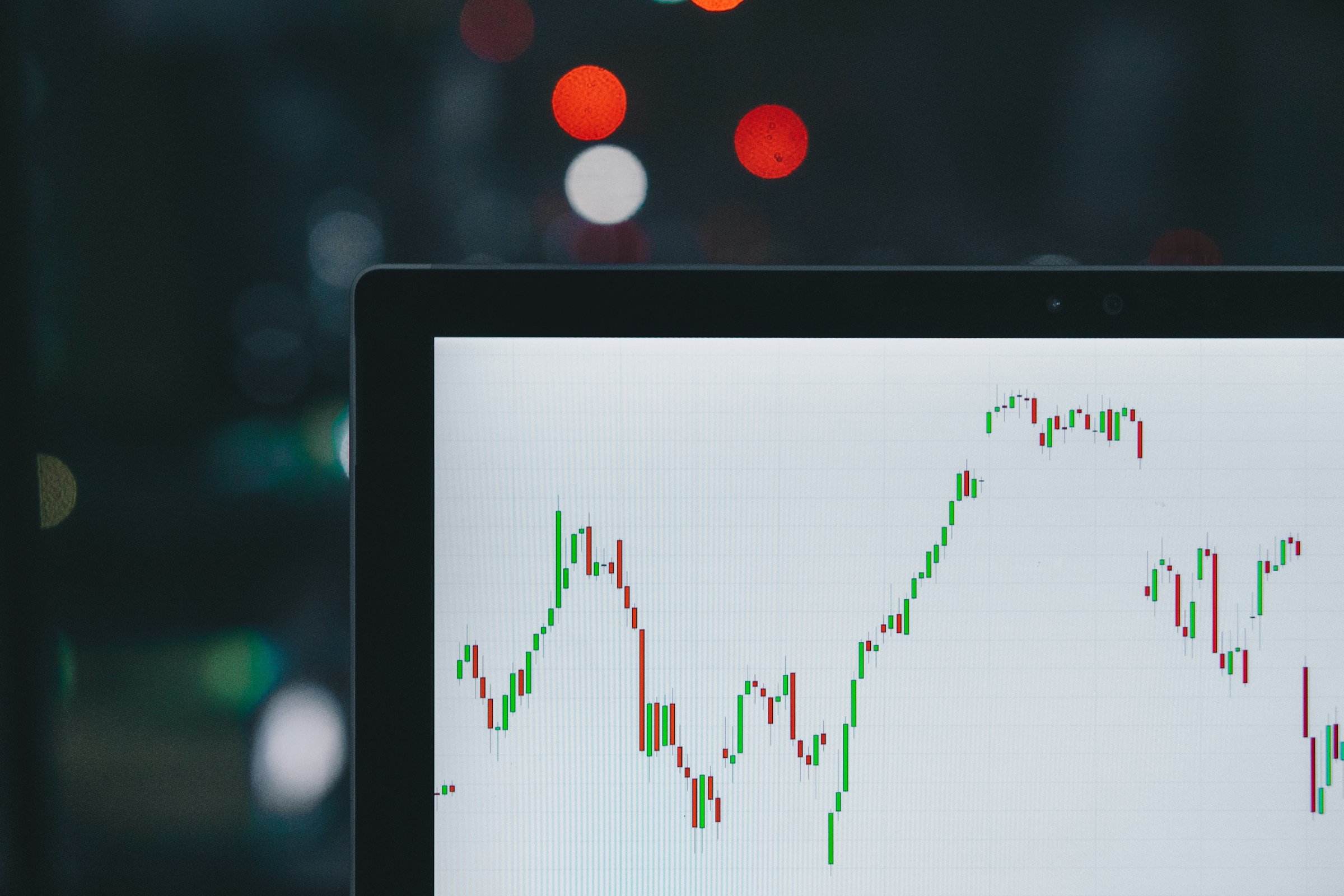
Traders commonly increase their positions by using leverage, meaning they borrow funds to supplement their existing cash balance. Essentially, you’re borrowing money in order to make a trade. But is using leverage always the smartest move? After all, leverage can amplify your wins, but it can just as easily magnify your losses.
To answer this question, it’s important to learn more about how to define leverage, how leverage works, and how it can impact your trading revenue.

Leverage: Meaning in Stock Trading
Traders should first learn how to define leverage. Leverage refers to the practice of borrowing money to enhance your ability to invest in a particular security.
For example, suppose that you wish to invest in a security that’s a higher price than your current trading account balance. In that case, your broker may allow you to borrow a certain amount of money to complete the transaction.
This is also known as “margin trading,” where the money you contribute to the trade is defined as the “margin” while the broker supplies the leverage. Some stock brokers require you to open a separate margin account, which may have limits on the amount of money you can borrow for a given trade.
How to Calculate Leverage in Margin Trading
Leverage may be mathematically defined as margin-based leverage, which is the ratio between the total value of the transaction and the amount of money you borrowed to make it happen. The formula can be expressed as:
Margin-based leverage = (Total value of the transaction) / (Margin required)
Many brokerage accounts will set limits on your margin-based leverage, meaning you’ll be required to put down a certain amount of margin. This is usually expressed as a percentage of the total transaction.
For example, a brokerage account might require that you put down 10% of the total transaction. If the total transaction is $100,000, you would need to contribute $10,000, and the broker would supply the remaining amount. But if you plug these values into the above equation, you get:
Margin-based leverage = ($100,000) / ($10,000)
Therefore, your margin-based leverage comes to 10:1. However, in the real world, brokers may set stricter limits, often 2:1 to 5:1 for standard securities.
Leverage in Forex Trading
Traders commonly rely on leverage in the foreign exchange market. There, leverage can be as high as 100:1. Thus, for every $1 in your account, you can trade up to $100. That may sound risky, but keep in mind that foreign currencies don’t typically change much during a given trading day, which limits the volatility seen in forex markets.
However, that’s not to say that there is no risk. When you’re dealing with such high margin ratios (e.g., 100:1), even a small change in the forex market can translate into large profits and losses. That’s why it’s important for traders to gauge the risk before taking on an overleveraged position.
Benefits and Risks of Using Leverage in Trading
There are unique benefits and risks associated with leverage, meaning this strategy can enhance your gains but also amplify your losses. Here are some things to consider before using leverage to take a trading position.
Pros of Using Leverage in Trading
Leverage provides such benefits as:
- Granting you larger buying power for making stock trades
- Giving you access to massive profits for successful trades
- Only requiring you to put up a fraction of the trade as margin
As a result, leverage can result in greater trading efficiency since your profits can vastly exceed your initial margin. You’ll repay the leverage to the broker and keep the remaining value, though there may also be some associated brokerage fees.
Cons of Using Leverage in Trading
It’s important to remember that if you use leverage and lose, you’ll lose far more than your initial margin. Your broker will also require you to pay back the money you borrowed to make the trade.
Brokers can also issue a “margin call,” and if you fail to repay the balance, they can liquidate your portfolio to recover their funds. Thus, leverage has drawbacks that include:
- Total account depletion if the trade fails to perform well
- Margin calls can reclaim your portfolio’s assets
- Some brokers may charge additional fees for leveraged positions
Additionally, many brokers charge interest when they purchase assets on margin. These interest rates can vary by broker but will deplete money from your trading account.
How to Use Leverage in Trading
Leverage is all about finding the right balance between risks and rewards. If you develop a working strategy, you can then use leverage to enhance your trading position(s) and minimize your risk. Here are tips for buying stocks on margin and using leverage to its fullest advantage.
Understand Your Margin Account Requirements
To use leverage, brokers commonly ask that you open a margin account. This typically requires you to maintain a certain margin account balance, which is known as the “maintenance margin.” If your balance drops below this threshold, your broker may issue a “margin call.”
During a margin call, you’ll either need to deposit more money into your account or sell assets in order to repay the margin and keep your account in good standing. Otherwise, your broker may automatically liquidate some or all of your assets to reclaim their money.
Minimize Risk With Lower Leverage Ratios
Aim for lower leverage ratios, especially when you first start out. For example, you might go for a leverage ratio of 5:1. This means that for every $100 in your account, you’ll have $500 worth of buying power, giving you access to sufficient leverage without exposing you to undue risk.
As you progress in your trading abilities, you can take on additional risk. You might also be willing to take on extra risk in the forex market since these markets have less volatility than the U.S. stock market.
Use Stop-Loss Orders to Minimize Risk
Remember that if you use leverage on an underperforming stock, you risk losing your margin as well as the amount of money you borrowed to take on this position. That’s why it’s important to minimize risk by using a stop-loss strategy.
A stop-loss order will automatically sell a stock once the price dips below a certain predefined threshold. This allows traders to easily jettison an asset once the price drops, which minimizes the amount you’ll lose from an underperforming stock. It also saves you from losing more of the money you borrowed from the broker.
Maintain a Balanced Portfolio
Regardless of your trading strategy, it’s best to maintain a balanced portfolio rather than put all of your eggs into one basket. A diversified portfolio will retain value even if one stock market sector should experience a period of volatility or decline.
Having an existing portfolio can serve as a safety net should your leveraged stock fail to perform. If your broker issues a margin call, you can always liquidate your other stocks rather than pay cash to maintain your account balance.

The Importance of Good Stock Research
Whatever your investment strategy, you’ll only truly thrive when you make well-informed decisions about your trades. That’s why it helps to have access to the latest and best stock research tools.
Gorilla Trades offers a robust library of tutorials, research features, and more to help you make the most of every dollar. Sign up for a free trial and receive 30 days of stock picks delivered to your inbox.
